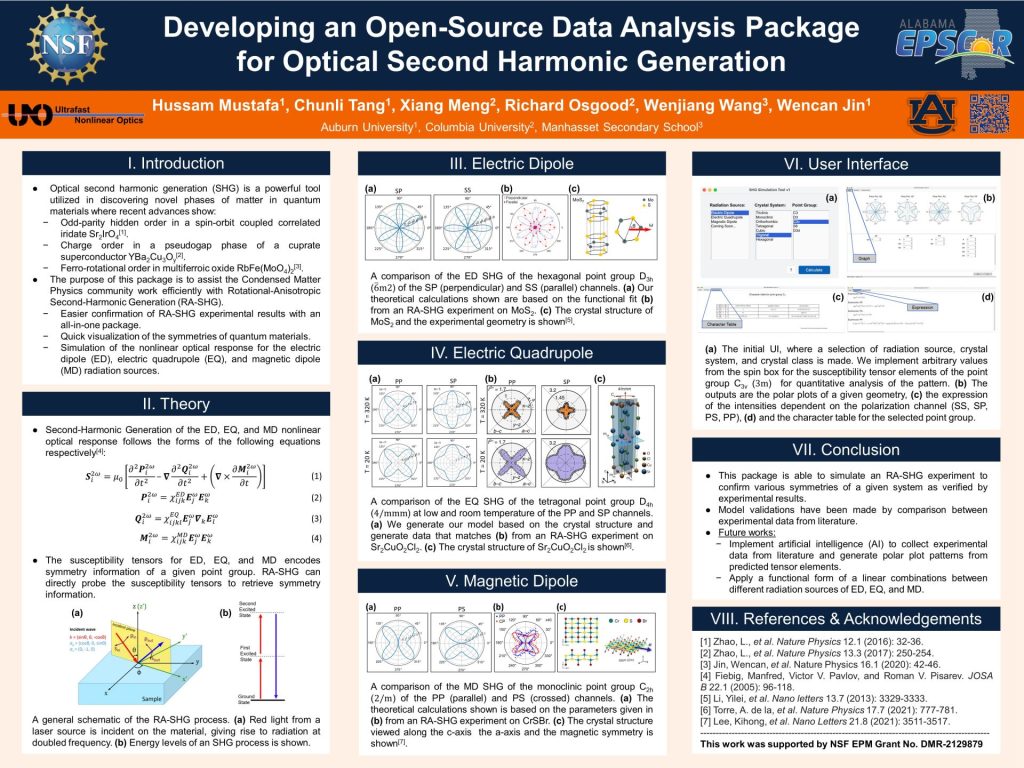Rotational-Anisotropic Second-Harmonic Generation (RA-SHG) Simulation Package
Rotational-Anisotropic Second-Harmonic Generation Simulation Package

Update Notes
- v0.1 (May 4th, 2023)
- Beta version – First release of the software, features including:
- Reflection geometry
- Radiation source of electric dipole, electric quadrupole, magnetic dipole
- Crystal system
- Point group
- Polar plots of SS, SP, PS, and PP polarization configurations
- Selection of susceptibility tensor elements and incident angle
- Calculated expression for each of the polarization configurations
- Character table displayed dependent on point group selected
- Beta version – First release of the software, features including:
- v0.2 (July 1st, 2023)
- Beta version – Update, features including:
- Crystal orientation by axis selection or rotation
- Option to provide feedback (would be greatly appreciated ツ)
- Beta version – Update, features including:
Future Implementations
- Massive overhaul in code performance, usability, and readability
- Display of susceptibility tensor with allowed tensor elements
- Option for rotating or fixed analyzer
- Fitting function model to decide proper point group based on raw data input
- Interactive 3D visualization tool of crystal structure and symmetry
- Transmission geometry
- Simulation of EFISH and MFISH generations
- Use of artificial intelligence to collect experimental data from literature and generate polar plot patterns
If you would like to be notified when future updates are released, please email auburnunogroup@gmail.com or hnm0037@auburn.edu to be added to our mailing list. If you are interested in providing additional feedback, please email us or visit our feedback page.
Work of Hussam Mustafa & Chunli Tang
Software Coming Soon!
Vibrating-Sample Magnetometer (VSM) Data Processing Package
- General hysteresis plotting software
- Tailored towards VSM functions
- Input any hysteresis function
- Process raw data and fit to a curve
- Remove background noise and able to return area between the curves
Work of Chunli Tang & Dylan Thomas
Raman Spectroscopy Data Analysis
- Process raw data and fit to a curve
- Remove background noise and able to return Raman shift peaks
